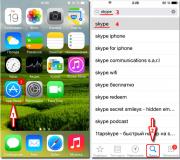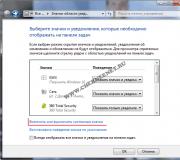Missing volume icon
The user faces various problems when constantly working at the computer. Whether it is a laptop, computer or netbook - no difference. Today we will talk about a very interesting situation that can be found on different Windows systems, namely when the volume icon disappeared.
What to do in such a situation? First of all, we restart the computer, usually this helps to return the volume icon to its place.
If, as the people say, it didn't work, then read on. Most commonplace, click on the tray tab and see if there is a volume control icon. If it is there, then we will configure its display on the taskbar.
Click on the tab and then select "Customize."

A new window will open in which you will find the same icon. Now set the Behavior column to Show Icon and Notifications.
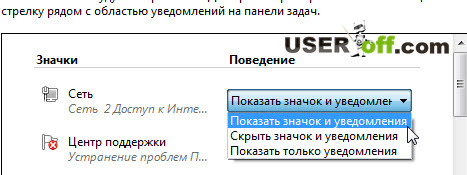
Also just below this window, click Turn System Icons On or Off.

Make sure these settings are: Volume - On. If you have made any changes, click "OK".
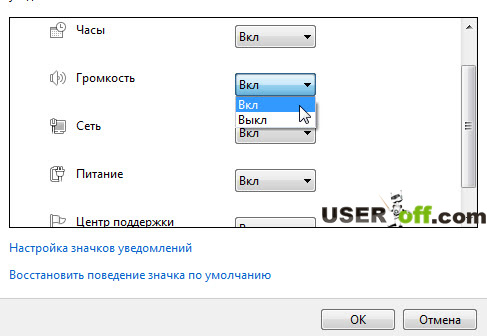
After which it should appear for you. You can also enter these settings in another way: "Start" - "Control Panel", set the view mode "Large icons" or "Small icons" (this is done in the upper right corner of the window). Then we find the item "Notification area icons".

Here you are looking for "Volume" and put the option "Show icon and notifications" in front of it. Then we press "OK" and if nothing has changed, we restart the computer, after which everything should appear.
Be sure to read the information if you lose sound on your computer.
Problem solving assistant
Microsoft is great! They try to guess users when there are difficulties in working at the computer. Readers of my blog have repeatedly seen links to various fixes that help Windows users solve the errors that have occurred. To download the utility, follow the link.

After downloading, launch it. Click "I Agree", thereby agreeing to the terms of use of the software. Click Next to start fixing Windows.

We are waiting for the program to finish manipulating your Windows and create restore points.
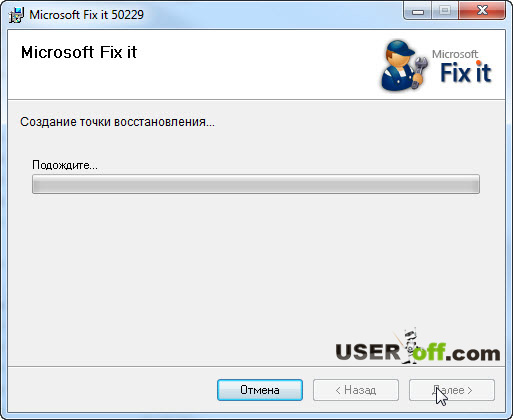
Upon completion of the process, you can click "Close".

Check the volume icon for the presence in the taskbar.
Editing the registry
Above, I talked about the situation if your system is not configured as needed. Further, we will understand the problem itself.
For users who are with a computer on you - I consider this method the most difficult, but it guarantees the return of the volume icon to 100% (if you, of course, perform all the actions on your computer).
Missing volume icon? It doesn't matter, we have a registry that will help you put the sound volume icon in its place. We go to "Start", select "Run" - enter regedit and press Enter. Then the Registry Editor opens. Now your attention is needed, do the following path: HKEY_CURRENT_USER \ Software \ Classes \
LocalSettings \ Software \ Microsoft \ Windows \ CurrentVersion \ TrayNotify. In the right part of the window, find IconStreams by right-clicking on the parameter, selecting "Delete" - "Yes". Then we do the same with the PastIconsStream.
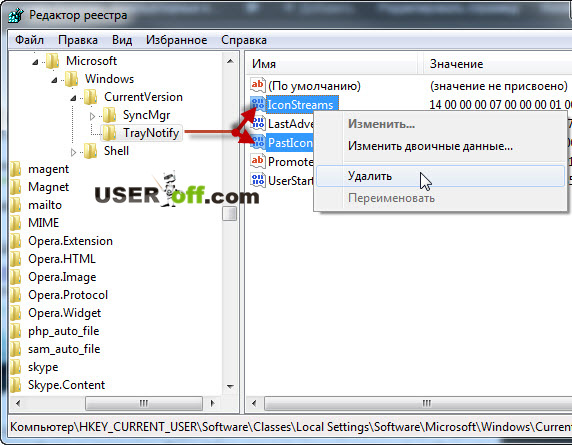
Exit the registry and restart the explorer.exe process ("Explorer"). To do this, we have to open the "Windows Task Manager". This is done using the key combination "Ctrl" + "Shift" + "Esc", then go to the "Processes" tab. Find explorer.exe there, right-click on it and in the drop-down menu, boldly click "End Process". A message will appear, in which we also click on the button of the same name.
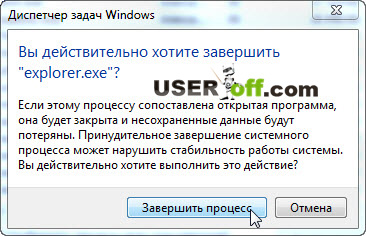
Do not be alarmed, everything will disappear from the desktop. It should be so.
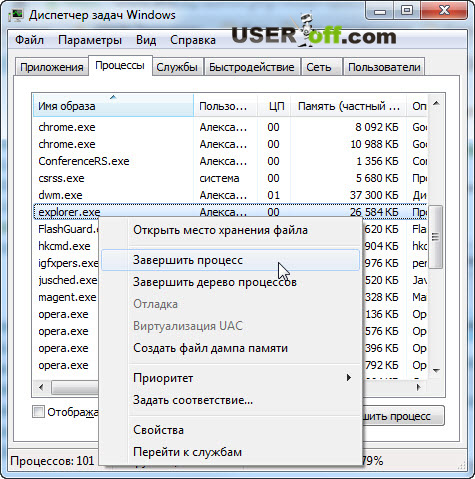
Please note that you do not need to close the dispatcher window, and if you have closed it, we just start it again. Now go to "File" - "New task (Run ...)".

We type explorer.exe and press Enter. We are glad, because, firstly, all the desktop icons are back, and secondly, the volume icon reappeared in the taskbar, as if it had not disappeared anywhere.
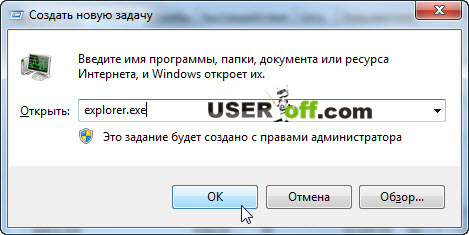
If nothing appears (in theory, it should!), Restart your computer. This method should be used only as a last resort, when nothing else helps, because you need to do it carefully! The registry is not a toy; by deleting the necessary parameters, the system may fail.
I have provided examples for Windows 7 in this article, but for those using Windows XP, there is a very detailed article from Microsoft. Link to article.
If you have done all the steps, but there is no result, then try restarting your computer after all the methods. Perhaps rebooting was missing Windows.
On this note, I conclude my article.

